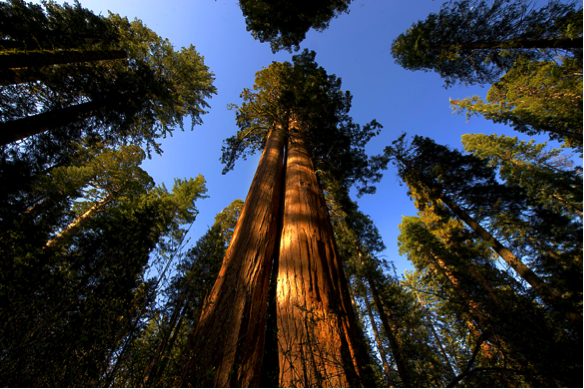1. They are multicellular.
2. They are autotrophs.
3. Plant cells have cell walls made of cellulose.
4. Plant cells have chloroplasts that perform photosynthesis.
Similar to Fungi in that most are multicellular and have cell walls. However, plants’ cell walls are made up of cellulose as opposed to chitin. Very different from Protists because plants are multicellular, as opposed to protists which are mostly multicellular. They can reproduce both sexually and asexually.
Organism 1: Taxiphyllum barbieri
Kingdom: Plantae
Division: Bryophyta
Class: Bryopsida
Subclass: Bryidae
Order: Hypnales
Family: Hypnaceae
Genus: Taxiphyllum
Species: barbieri

Figure 18: Taxiphyllum barbieri
Taxiphyllum barbieri is a type of moss that can grow on almost any surface and grows between 3-10 cm thick. It can tolerate temperature up to 85 degrees Fahrenheit. However, it grows best at temperatures up to 75 degrees fahrenheit [30] The moss is very undemanding and can continue to grow in most situations. This plant is covered in small oval shaped leaves that are 2mm long. The plant is native to southeast Asia, where it grows in a moist environment on trees, rock, and on the ground. Taxiphyllum barbieri has no roots, so it sucks different nutrients through it stem and leaves [31]. These plants are commonly used in aquariums in order to protect baby fish from cannibalistic parents, or to beautify the aquarium. Java moss can also be used as food for baby fish making it beneficial to its environment.
Why does it belong here?
Taxiphyllum barbieri is part of kingdom plantae because It is a multicellular eukaryote and it does photosynthesis as a mode of nutrition which contributes to it being a plant. The Taxiphyllum barbieri contains cellulose in its cell wall and chloroplasts to receive light which are two important parts of the Taxiphyllum barbieri being a part of the plant kingdom [30].
Organism 2: Giant sequoia
Kingdom: Plantae
Division: Pinophyta
Class: Pinopsida
Order: Pinales
Family: Cupressaceae
Subfamily: Sequoioideae
Genus: Sequoiadendron
Species: S. giganteum

Figure 26: Giant sequoia
The Sequoiadendron giganteum, commonly referred to as the giant sequoia, is the largest tree, as well as the single largest living thing in the world by volume. They grow to an average height of 164–279 ft, and an average diameter of 20-26 ft [32]. These trees are amongst the oldest living things on earth, with the oldest known giant sequoia being roughly 3,500 years old. This tree’s bark is around 3 ft thick, which provides a significant amount of fire protection to the tree [32]. The leaves of the Sequoiadendron giganteum are evergreen, and arranged in a spiral on the shoots of the tree. This tree regenerates using seeds, with trees starting to produce seeds at the age of 12 years [32].
Why does it belong here?
Like most plants, the giant sequoia is multicellular and eukaryotic. It possesses cell walls and it is an autotroph, producing food through photosynthesis.
Organism 3: Red Maple tree
Kingdom: Plantae
(unranked): Angiosperms
(unranked): Eudicots
(unranked): Rosids
Order: Sapindales
Family: Sapindaceae[2]
Genus: Acer
Species: A. rubrum

Figure 27: Red Maple tree
The Acer rubrum, also known as the red maple tree. It is recognized by the U.S. Forest service as the most abundant native tree in eastern North America [33]. When mature, the red maple tree often reaches heights of 50 ft. Its flowers, seeds, and twigs are all various shades of red, and it is well known for its scarlet leaves during the autumn. The diameter of its trunk ranges from 18 to 30 inches. Acer rubrum is not harmful to humans, and its attractiveness and ability to be transported easily makes it one of the most abundantly planted trees in the United States [33].
Why does it belong here?
It belongs to the kingdom plantae. Plants are mainly multicellular, predominantly photosynthetic eukaryotes. They also posses cells walls, which limits their ability to move. As a plant, the red maple tree possesses all of these traits. It is a multicellular organism, it has cell walls, it is a eukaryote, and it is an autotroph. This means that it can produce its own food. Like other plants, it does this through photosynthesis, a process where the plant converts light energy into chemical energy that it uses as food